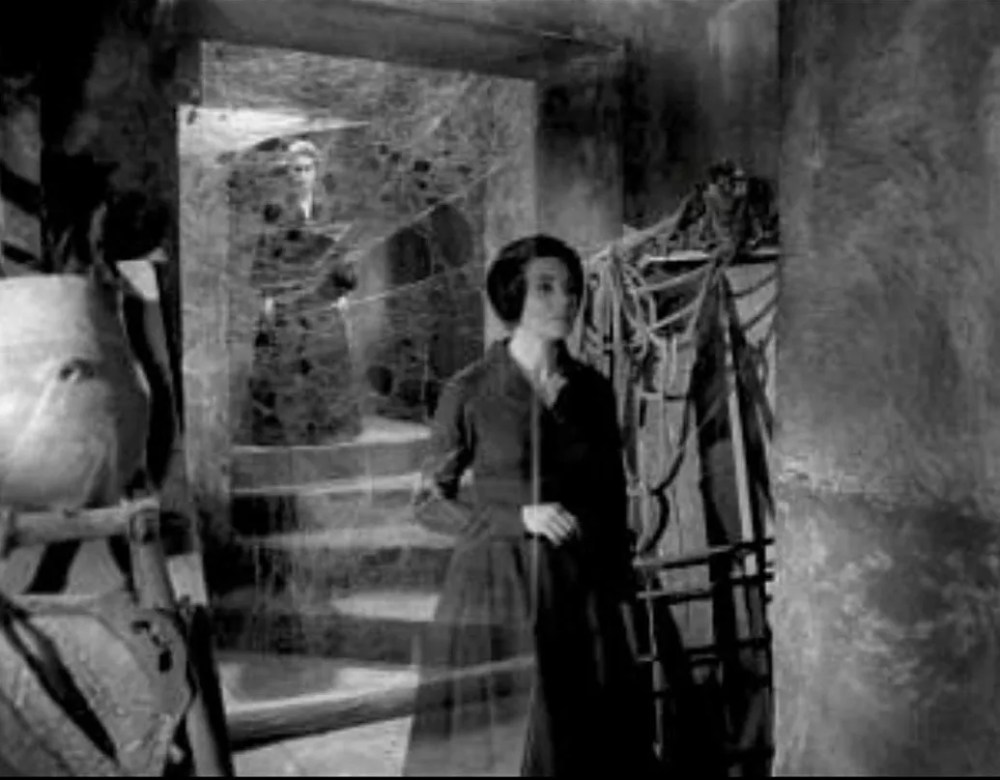In April 2019, New Line Cinema released James Wan’s production of The Curse of La Llorona, directed by Michael Chaves. It brought mainstream US attention to the important Mexican legend of “La Llorona,” or “the wailing woman.” In most versions, La Llorona is a banshee figure, often dressed in white, crying for her children whom she has killed after herself being betrayed by a lover. The figure has been connected to a broader history of colonialism in Mexico, as this excellent article by Dr. Amy Fuller explains. Numerous cinematic incarnations of the legend of La Llorona precede Chaves’s film, many made in Mexico. La Maldición de la Llorona, made in 1961 but released in Mexico in 1963 and in the US in 1969, and directed by Rafael Baledón, is a version worth watching despite its limitations. It should be stated up front that one of its principal limitations is that La Maldición is devoid of any taint of colonial critique; the film’s reference point is the Hollywood horror tradition more so than the historically- and politically rooted La Llorona of Mexican folklore.
You can check out the trailer for La Maldición here:
La Maldición follows a young woman, Amelia (Rosita Arenas), and her husband, Jaime (Abel Salazar), as they travel to the home of Amelia’s Aunt Selma (Rita Macedo) from which she was banished as a child. Amelia is on the eve of her twenty-fifth birthday, and her aunt has urgently summoned her back. Selma reveals, during the course of the film, that the two women have inherited the “curse” of “Madam Marina” or “The Crying Woman,” a lineage that is activated when they turn twenty-five. Selma does not seem to consider her inheritance much of a “curse,” however; indeed, she actively embraces it for, in this incarnation of “La Llorona,” the heritage is “omnipotence.” Pure unfettered power is what Selma has sought and gained from the corpse of her foremother in the cellar.
This original La Llorona was murdered as a witch. She was, Selma tells her niece, “terrifying because she wanted power.” She sacrificed everything in pursuit of this power, including husbands and, presumably, children. (This is where the original La Llorona myth, with its central sacrificed children, makes its tangential entry in La Maldición.)
The primary drama of the narrative is Amelia’s learning about her inheritance, one that necessitates her banishing her husband Jaime to the realm of “crazed beast,” locked in a dungeon—“the fate that awaits the men in our family,” according to her aunt Selma. As the clock strikes midnight on her twenty-fifth birthday, Amelia struggles with the family curse. Her aunt tells her she cannot resist: “You’ll feel in your veins something stronger than yourself. You’ll be compelled. . . . You’ll feel the desire for blood.” The curse will ensure she is no longer able to tell good from evil. Amelia’s struggle serves as the climax of La Maldición.
La Maldición is interesting for many reasons—not least for the compelling directing by Baledón and cinematography by José Ortiz Ramos. The film also includes multiple references to classic Hollywood horror, notably Dracula (1931), Frankenstein (1931), and Dracula’s Daughter (1936). Selma stalks innocent carriage passengers driving by, walks through a cobweb in an almost exact repetition of the similar scene in Tod Browning’s Dracula, and does not cast a reflection in a mirror.
Selma also has a malformed henchman, Juan (Carlos Lopez Moctezuma) who indulges in a rather gratuitous scene of whipping Selma’s incarcerated husband Daniel (Enrique Lucero)—just as Fritz (Dwight Frye) whips the creature in James Whale’s Frankenstein. More substantively, Selma is very much like the Countess Marya Zaleska (Gloria Holden) in Lambert Hillyer’s Dracula’s Daughter—although, unlike the infamous Countess, Selma has no compunction at all about embracing her inherited curse and the power it gives her. She revels in it, evincing no desire to be “normal” (and powerless).
Indeed, in its central narrative of female power, La Maldición is akin to another Hollywood horror film closer to it in time, Edward Dein’s 1960 film, The Leech Woman. In this film a middle-aged woman sacrifices (literally) her husband in order to gain fleeting access to beauty and power. Like Selma in La Maldición, she never looks back! (I might also add that the female cadaver in the cellar–repository of an enormous determining force–also evokes Hitchcock’s 1960 film, Psycho.)
One of the most distinctive aspects of La Maldición, however, is the way it explores both visually and narratively the meaning of the family curse. The film dwells on the real inexorability of La Llorona and what she bequeaths to her daughters. The more horror I’ve watched and read, the more it’s become clear what is at its core. Horror is the encounter with the impersonal, with that which is beyond and impervious to anything human—to our desire, our choice, our very being.
La Maldición materializes this definition of horror, as Selma tells her horrified niece that she will be unable to resist the curse, that she’ll forget everything about her life (her own, personal life). Amelia will become a mere vessel for something that’s not about her, something that has been repeated and will be repeated through the ages. Below is a clip from the film in which Selma articulates the nature of the curse –and the central horror of the film. It’s a chilling scene –and is visually brilliant. It’s one of the clearest statements, moreover, of what horror fundamentally is.
Related: I have written more extensively about The Leech Woman–a fabulous film–in the collection, Elder Horror, edited by Cynthia Miller and A. Bowdoin Van Riper (2019):
La Maldición de la Llorona (The Curse of the Crying Woman) is available on DVD. Definitely worth checking out, especially if you’re planning on watching James Wan’s production:
You can stream the 2019 James Wan-produced and Michael Chaves-directed The Curse of La Llorona here. It’s also just out on DVD:


















An absolutely fascinating and fantastic read – thank you! I need to see this now! Also, this sentence is just stunning: “Horror is the encounter with the impersonal, with that which is beyond and impervious to anything human—to our desire, our choice, our very being.” Brilliant!
Thank you! Dawn